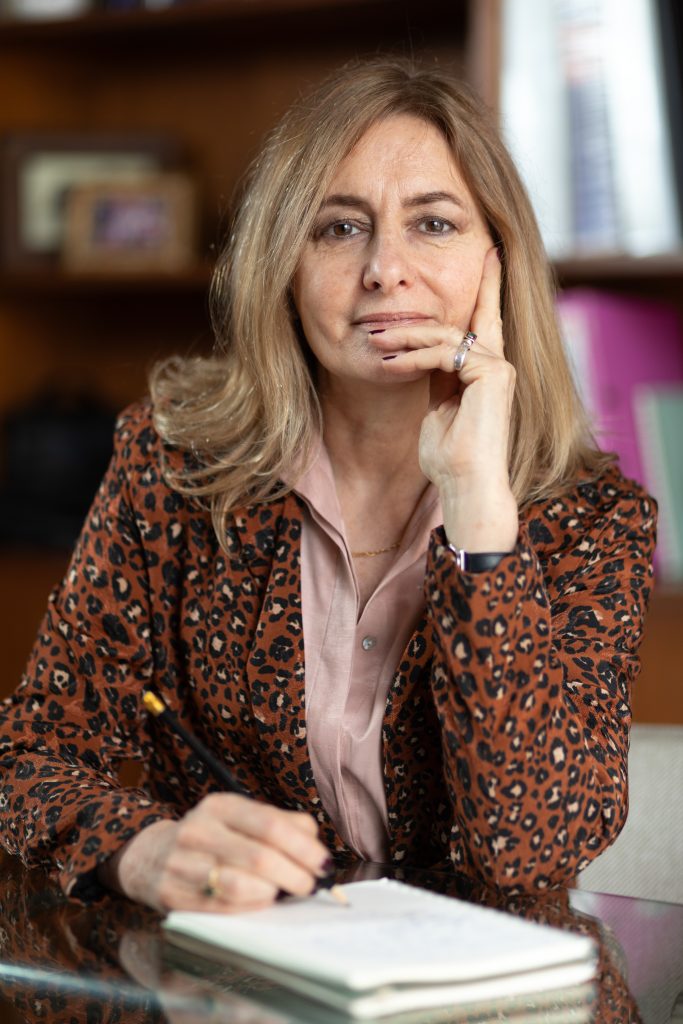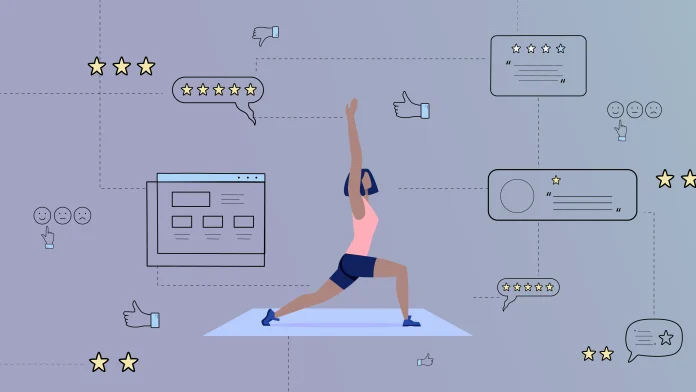Interview by Sofia Campos Caminos

Julieta Casnati is a Master Certified Coach (MCC, ICF), leadership trainer, and author of We All Can Be Leaders! and Sesión Empowerment. With more than 15 years of experience working with leaders and teams across Latin America, she brings a grounded, insightful perspective to the evolving conversation around conscious leadership.
Her journey into coaching began during her time as director of an educational center—where a single team coaching session sparked what would become her life’s work. Originally trained as a math teacher, Julieta later pursued a master’s degree to improve her leadership skills. That search for answers eventually led her to develop the CEL® Method—a practical, research-informed framework to cultivate what she calls the “8 Power Skills” essential for leading with clarity, collaboration, and courage for more efficient teams.
Recognized as one of the Top 20 coaches on LinkedIn by Favikon, Julieta is known for combining experience, curiosity, and purpose to help individuals lead themselves—and others—more consciously.
In this interview with Simple People, she shares key reflections from her path and invites us to rethink leadership as an everyday, human practice.
SIMPLE PEOPLE: How did your interest in coaching and conscious leadership begin?
JULIETA CASNATI: Well, it goes back many years. Coaching began when I was director of an educational center, because I’ve always been very curious. As a math teacher, I started taking on leadership roles after doing a master’s to prepare for a higher education position. Two years in, we experienced team coaching sessions. I remember that day clearly: I discovered coaching, fell in love with it, and thought, “This is what I’m going to do for a living.” Before that, I had a difficult experience in a leadership role—that’s why I pursued the master’s and trained as a director to do it better. That was around 2009. I then researched what makes a good leader and eventually developed my own model, which I presented in my latest book.
SP: From your experience in coaching across different environments, especially corporate, what do you see as the most common limitation preventing someone from being a good leader on a personal level?
JC: I would say the biggest limitation is lack of self-awareness, which leads to underdeveloped emotional intelligence. In my model, that’s the number one competency. If you don’t know yourself, you can’t know your emotions; if you don’t know your emotions, you can’t manage them; and if you can’t manage them, you can’t communicate effectively. Emotional and social skills are the final stages of emotional intelligence.
SP: Does emotional intelligence involve being able to process your internal dialogue and express it out loud? What about tools like journaling, for example? Do they help with self-awareness and empathy?
JC: Absolutely—empathy is the third stage of emotional intelligence. First is emotional self-awareness: recognizing what you’re feeling—fear, jealousy, anger—and naming it. Second is identifying the thought behind that emotion because emotions are created by thoughts. Once you manage your own emotions, only then can you understand others’. If I recognize my own sadness, I can recognize it in someone else—that’s empathy.
SP: What are the main challenges in today’s workplace culture that hinder good leadership? Are there entrenched behaviors that are real obstacles?
JC: I’d say the main obstacle is mindset. When I work in organizations, I encounter people who resist change. Adaptability is one of the eight key competencies of leadership. If you can’t adapt to environmental changes—like AI—you’ll get left behind. Organizations that fail to adapt suffer the same fate: decline, stagnation, maybe even collapse.
Leadership starts with self-leadership. You must first manage yourself; once you do, you can manage projects, teams, organizations.
SP: How do you approach the topic of burnout or excessive demands in corporate environments—whether in your coaching program, talks, or consulting work?
JC: One of the core competencies I work with—and you’ll see I link everything back to this—is resource management. And within resource management, there’s time management. I give a workshop called Conscious Time Management, and what it’s really about is bringing awareness to how we organize our time: how much we dedicate to work, how much to family, to our children…
There are many people who aren’t able to clearly identify their priorities. There’s a very interesting tool called the Eisenhower Matrix, which helps us think in terms of what’s urgent and what’s important. When you combine these two variables, you get four quadrants. Two of them are where people lose the most of their time: the tasks that are urgent but not important, and those that are neither urgent nor important. And that’s where time slips away—because 24 hours are just that: 24 hours, not a second more nor less.
So people learn—consciously—how to manage their time. First, they learn to prioritize: what’s truly important in their personal lives, and what’s important at work.
I talk about this a lot in my book, because it’s one of the main causes of stress. Burnout comes from stress, which is essentially the internal judgment that I’m not capable of handling everything I have to do. Of course, part of it falls on the individual employee, and another part on the leaders. But when you’re clear on your priorities, you can organize yourself and manage your time better.
And if you’ve developed your emotional intelligence and assertive communication—two key competencies—you’ll be able to ask for help, speak up, and express what you’re experiencing. If you haven’t developed those competencies, it’s very unlikely you’ll say anything. You bottle it up… until eventually it all explodes. And that’s what we call burnout.
SP: Have you noticed that people apply these leadership skills first in their personal lives? Have they told you that it helps beyond work?
JC: Of course—it’s all connected. Leadership starts with self-leadership. You must first manage yourself; once you do, you can manage projects, teams, organizations. What happens in corporate coaching is transformational in an internal level: what shifts inside a person affects every area of their life—family, relationships, and then their work.
SP: You also mentioned in a podcast how important it is that your values align with your actions. Is defining your personal values part of emotional intelligence? And what happens when there’s a disconnection? How does that affect personal and professional life?
JC: Values relate to the second key competency: integrity—alignment between your chosen values and behavior. I use a tri-axial model: social, personal, pragmatic values. If there’s misalignment, it creates emotional dissonance and eventually impacts health. For example, if you value honesty but lie, you’ll feel guilty and start blaming others. It’s a vicious circle. We address this deeply in psychological coaching.
SP: Are there practical exercises to help people identify their values?
JC: Yes. My coaching process focuses on values—though not all coaches do. You need awareness of what drives your behavior in order to change it. For example, if family is a value but you neglect them, that misalignment causes stress, burnout, even health issues. I discuss this in my program.
We are first and foremost human beings. Leaders who don’t understand that cannot truly lead. We all carry stories, emotions, history, education… If we can’t see that in others, we can’t lead them.
Leadership is a decision. You have to decide to be a leader. Why? Because being a leader means choosing to grow.
SP: If you could say something to someone who doesn’t see themselves as a leader, but wants to start developing that potential—what would you tell them as a first step into this world?
JC: Well, first of all—I’d tell them to read my book, We All Can Be Leaders, because I truly believe that’s the case. Leadership is a decision. You have to decide to be a leader. Why? Because being a leader means choosing to grow.
Some people naturally show leadership qualities—maybe because they had a supportive upbringing, emotionally present parents, and a strong foundation. In those cases, leadership tends to come more naturally. I call that the charismatic leader. But my framework—which I explain in the book through three different models—doesn’t focus on charisma.
The first model is the traditional one, which looks at how power is used. From that, different leadership styles emerge—like authoritative, transactional, or empowering leadership. The second model is about how decisions are made, and that gives us four additional styles.
My own model is built around competencies—how developed are your leadership capacities? And the reason I say “how developed” is because they can be developed. My model includes two categories: one personal, and one pragmatic. Depending on how you combine those, you get four different leadership styles. But in all of them, there’s room to grow. That’s why I call all of them leadership—even if it’s just beginning to take shape. Because the truth is, everyone has something. A spark, even if it’s small.
For me, we are all leaders in potential. That’s how I see it.
SP: If you had to choose one simple daily practice—or a few—that help strengthen leadership (whether in your personal life or at work), what would that be?
JC: After so many years as a coach, I’ve collected tools from different schools and continue learning all the time. It’s like I have a toolbox that I adapt depending on the person. For example:
- If you want to develop emotional intelligence, start with a simple exercise:
For one week, try to identify moments when an emotion arises suddenly. Learn to name it—What did you feel? What happened in your body? What were your thoughts? Try to separate the event from your interpretation, because one situation can trigger many different interpretations—and those interpretations generate the emotion. If you can spot that, you’re already working on the first two phases of emotional intelligence. - If you want to work on communication, train your listening. Really listen—don’t interrupt. Observe everything: not just words, but body language, hands, eye contact.
Try to understand what’s behind what the other person is saying. - If you want to explore values, identify the three types: social, personal, and pragmatic. What do you truly value? That will guide your behavior.
- If you want to strengthen your vision, do visualization exercises. Close your eyes, find a quiet place, play soft music, turn off your phone. Visualize yourself five years from now: what do you see? Then draw it, write it down, and build an action plan from there.
- If you want to develop the pragmatic side, do a weekly time audit. Where is your time going? Phones today can help you track it. Then evaluate how much time you’re dedicating to each area of your life.
- To work on adaptability, try physical flexibility exercises: dance, move—this impacts your neurology.
- To better manage change, study the stages of cultural change in organizations.
- And for team development, learn what makes a meeting truly effective.
With all of that—you’ve got plenty to get started!





